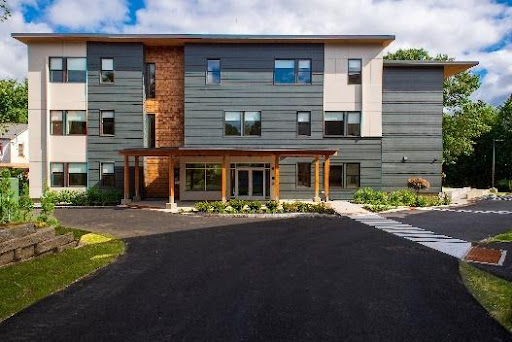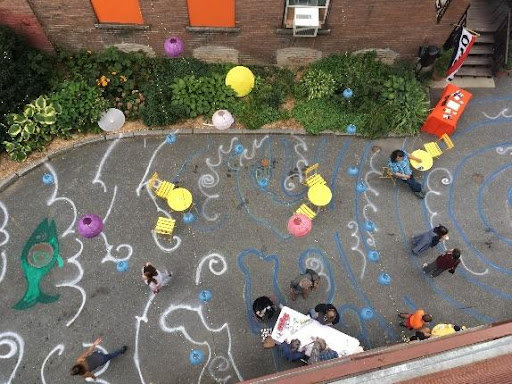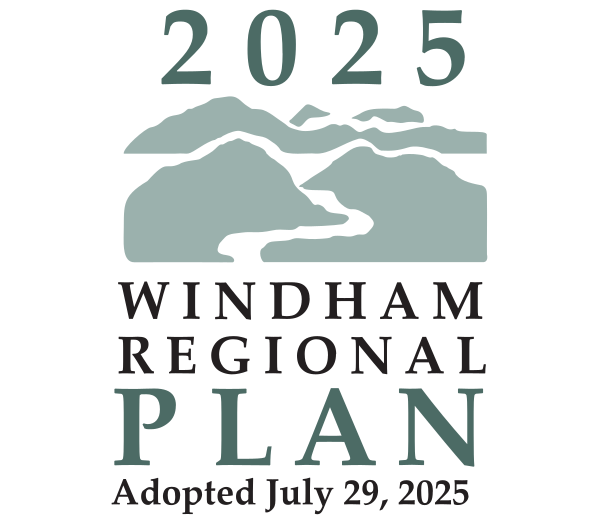regional planning
Windham Regional Commission also has a role in implementing the goals of the land use plan when it comes to addressing issues that cross over municipal boundaries. The following section highlights several projects that WRC has identified as being beneficial for the region and its member towns. The WRC will seek to complete these projects as funding and staff availability allow.
land conservation planning
This plan recognizes that land conservation planning can be more effective at the regional level with a focus on linking together parcels of land that span town boundaries and that form contiguous forest blocks and provide wildlife corridors. WRC will continue the work initiated under the Windham Connectivity Collaborative to map priority conservation areas in the region, meet with stakeholder groups and local partners, and assist towns with strategies for implementation at the local level.
village Water and wastewater assessment
The cost of building and maintaining centralized water and wastewater systems can be high, but infrastructure planning is an integral part of encouraging infill development and compact settlement patterns. This plan recognizes that gaining a better understanding of existing infrastructure capacity and potential areas for new systems is critical to answering where and how growth will occur in the region’s existing village and town centers. WRC will seek to complete a regional assessment of existing public water and wastewater systems that looks at capacity, condition, and operational issues and challenges. This study would assess the feasibility of new public wastewater systems in villages in the region where this is town interest in pursuing this infrastructure.
community revitalization
Reinvestment in regional centers, villages, and neighborhoods can promote compact settlement and add to the vibrancy of communities. Revitalization can happen through investment in infrastructure and public real improvements, retaining local business and public services, and redeveloping brownfields and other underutilized properties.
Vermont Community Revitalization Designation program
The Vermont Department of Housing and Community Development manages the state designation program, which provides incentives and offers towns assistances for encouraging new development and redevelopment in compact settlement areas. Incentives are offered for the public and private sector and include tax credits for historic building rehabilitations and code improvements, expedited permitting for certain housing projects, funding for transportation improvements, and priority consideration for other state grants. The following is a summary of the designation programs towns are eligible to apply for:
-
Downtowns: This program provides resources to assist with downtown revitalization, including priority funding for state grant programs, downtown transportation, capital improvement funds, income tax credit for rehabilitation of certified historic buildings, and expedited review for certain Act 250 permit applications. There are three designated downtowns in the Windham Region: Brattleboro, Bellows Falls, and Wilmington.
-
Village Centers: Villages that receive this designation become eligible for a number of benefits, including tax credits for building rehabilitation and improvements as well as priority consideration for state programs. Currently, the region has 27 state designated village centers: Algiers Village, East Dover, Grafton, Guilford Center, Jacksonville, Jamaica, Londonderry, Marlboro, Newfane, North Westminster, Putney, Readsboro, Saxtons River, South Londonderry, South Newfane, Townshend, Vernon, Wardsboro, West Brattleboro, West Dover, West Townshend, Westminster, Westminster Station, Westminster West, Weston, Williamsville, and Whitingham.
-
Neighborhood Development Areas: Areas eligible for this designation include those within walking distance of a designated downtown, village center, new town center, or within a designated growth center. This program offers special permit and tax incentives to encourage mixed-income housing. Currently, Brattleboro and Putney are the only communities in the region with neighborhood development areas.
-
Growth Centers: The Growth Center program designates areas that are planned for new development in keeping with historic development patterns. There are no approved growth centers in the region.
-
New Town Centers: Some Vermont communities developed without a strong central core and this program supports the creation of an area that functions as a new downtown. There are no approved new town centers in the region.
 brownfield redevelopment
brownfield redevelopment
Brownfield redevelopment is another important revitalization tool. The region hosted a range of industries over the years, including organ manufacturers, print shops, paper mills, lumber mills and marble works, that left sites with contamination inhibiting redevelopment. Even properties with small businesses, such as gas stations or dry cleaners, can require extensive cleanup. As a result, many of these buildings and sites, which tend to be located in village centers and downtowns, have been left vacant or underutilized and are eyesores and potential threats to public health.
The WRC established the Windham Region Brownfields Reuse Initiative (WRBRI), which is funded through the EPA, to help communities address these land use challenges. The program conducts site assessments, cleanups and related activities at brownfield sites. The WRBRI also provides landowners with a better understanding of the funding sources, benefits, tax incentives available to redevelop such sites, as well as the liabilities and insurance issues related to their redevelopment. WRC has been able to assist with numerous brownfield redevelopment projects throughout the region using this program. One example shown above is the Red Clover senior housing development in Brattleboro, operated by the Brattleboro Housing Authority.
 creative placemaking
creative placemaking
Creative placemaking refers to a wide range of arts, cultural, and, design activities meant to strengthen communities. Examples of creative placemaking including using vacant buildings for community events or art shows, testing out potential small-scale public infrastructure improvements, and creating pop-up pocket parks and public gathering areas. The overarching goal of these activities is to bring new energy and attention to village centers and downtown areas, connect people and communities, and to envision ideas to build better communities. Ultimately these projects can help improve the economy and quality of life in village centers and downtowns and support growth in these areas.
